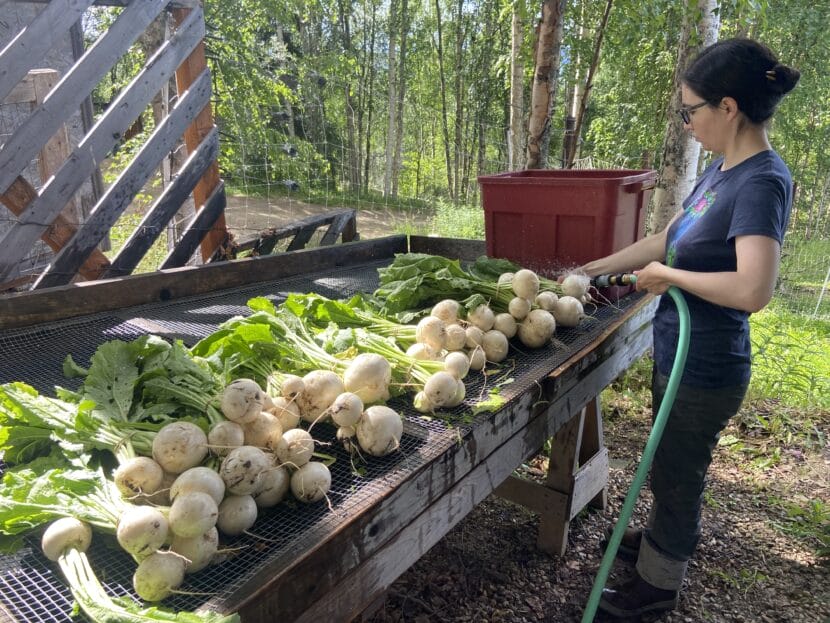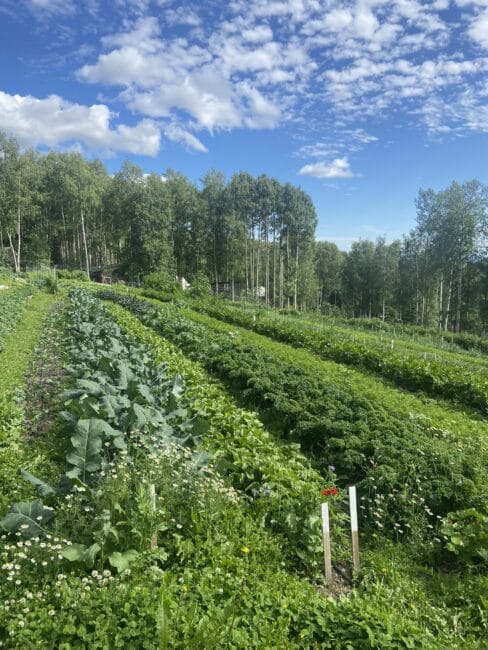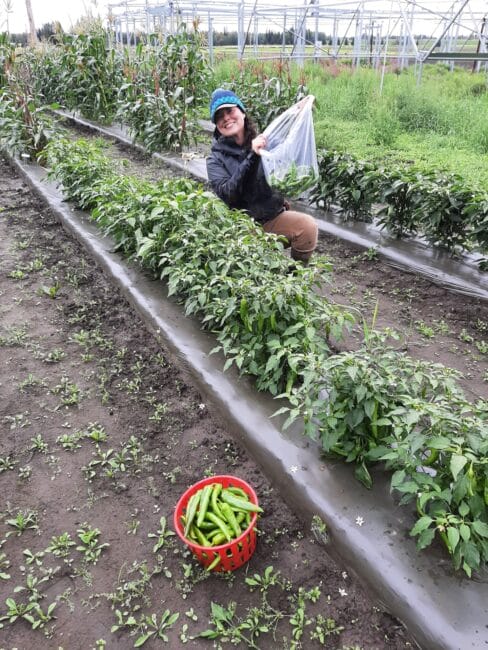
In October, fall gives way to winter for much of Alaska. But each year, the first frost is arriving later and later. That could be a boon for Alaska farmers.
University of Alaska Fairbanks professor Glenna Gannon says the longer growing season is making some types of crops possible for the first time.
“We’re successfully able to grow things like artichokes and field-grown tomatoes, peppers and corn here in Fairbanks,” Gannon said. “I don’t think, you know, 30 or even 10 years ago, that would have been successful.”

Gannon runs crop trials at the university’s experiment farm, where nine out of the 10 latest first frosts on record have occurred since 2001. For many places, especially in the Interior, that shift is allowing farmers to keep their crops in the field through mid-September.
In a state that’s struggled with food security, shifting seasons and hotter temperatures brought on by human-caused climate change could allow Alaska farmers to grow more abundant and diverse produce. But climate change can also bring drought, pests and permafrost thaw.
And it can make weather more erratic too. Tom Zimmer of Calypso Farm, just outside of Fairbanks, said that’s what he worries about most.
“Yes, frost-free days are increasing,” Zimmer said. “But the instability of the climate is making it probably more difficult to farm.”
Zimmer and his wife have run their small organic farm since 2000. This year, snow and frost lingered late into the spring, which delayed planting. Then a hot, dry summer came on quickly. Some plants thrived.
“This year, we had excellent green beans, amazing cauliflower,” Zimmer said. “But other crops bolted. It was too hot.”
Hot summers will become more and more common for many regions across the state, according to climate researcher Nancy Fresco with the university’s International Arctic Research Center. Fresco develops climate models to predict Alaska’s agricultural future.
“We’re anticipating continued increases in both the length of the growing season — how many frost-free days — but also in the cumulative heat across the growing seasons,” she said.
Summer heat gives some crops a boost
As the climate warms over the coming decades, the frost-free season will likely get longer by weeks or even months. And summers will continue to get hotter.
Every plant has its own baseline temperature where it begins to sprout and grow. To mature for harvest, it needs a certain number of days with temperatures above that threshold. Hotter summer days that linger later in the year can increase the number of good growing days to give certain crops a boost.
Warm-weather species, like tomatoes, corn and peppers, need temperatures of at least around 50 degrees to start growing. To ripen, they need a lot of days that fall above that threshold. So historically, those crops have been hard to grow in Alaska without a greenhouse.
But even cold-tolerant species, like brussels sprouts, have been a challenge because they take a relatively long time to mature. Farmers and gardeners who have tried to grow them in Alaska have risked losing their crops to frost and snow before the harvest.
Theoretically, climate change could help both types of crops. But Fresco said existing climate models also neglect a lot of important factors that shape farming.
“We were really just looking at air temperature, which is of course, a big deal in growing crops,” Fresco said. “But there are some really important factors about what can grow, — that are particular to Alaska, that are challenging in Alaska — that we haven’t yet had a chance to model.”

Permafrost — a layer of soil that remains frozen throughout the year — is one of the most pressing factors in the Interior. It can affect soil temperature and moisture, which can inhibit plant growth regardless of air temperatures. But as it thaws, it will likely destabilize seemingly viable farmland in the sub-Arctic.
And even as atmospheric conditions become more favorable, farmers will still have to contend with the long hours of sunlight — up to 22 hours for some farms in the Interior. Some crops just can’t tolerate that much light.
Farmers proceed with caution
Zimmer, from Calypso Farm, says there’s a disadvantage for every advantage that climate change brings. Some of Alaska’s more cold-tolerant crops, like cabbage or broccoli, may actually fare worse as temperatures warm. And many regions in the state are also facing a higher threat of summer drought.
Winters are also becoming more mild overall. While that can be great for certain perennial crops, like fruit trees, Zimmer said it’s brought more aphids and root maggots to his crops.
“In our 20 year experiment, one of the things that’s most noticeable to me is the insect life cycle,” Zimmer said. “One of the beauties of growing in Alaska is a harsh winter that kills a lot of our pests. And that’s starting to go away.”
Climate change will increase the breadth of crop varieties and the amount of land that’s viable for farming in Alaska. In some ways, Zimmer said, that’s a great opportunity to improve food security and access to locally grown food.
“We really want to focus on growing more farmers in Alaska,” he said. “But it’s not like Alaska is warming, everything’s great. We have to proceed slowly, carefully and work with the natural cycles.”
Both Zimmer and Gannon say that planting a diversity of crops is the best way for farmers to prepare for climate change. Though warm weather crops are becoming more possible, they might not be reliable.
“We have the ability to have a much greater breadth of what we grow here,” Gannon said. “But I still want to plant the seed of caution for anyone who’s going out to grow their garden or plant their farm. You know, they’re still in Alaska.”
